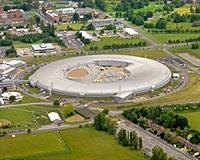 |
Washington (RIA Novosti) Jun 09, 2010 The C/2009 R1 comet is nearing the Earth and will be visible in the Northern hemisphere with a naked eye in mid-June, NASA said on its website. The comet, discovered in 2009 by well-known British-Australian astronomer and "comet-catcher" Robert H. McNaught, is already visible through powerful binoculars in the morning sky. NASA said the comet will reach its closest proximity to the Earth by June 15 and could shine just above the horizon in the Perseus constellation. It could be brighter than Venus and visible during the day. The comet's green plasma head, or coma, is larger than the planet Jupiter, while the long willowy ion tail stretches more than a million kilometers through space. Russian astronomer Leonid Yelenin from the Keldysh Institute of Applied Mechanics said on Tuesday the comet would be clearly visible in Russia. "It will be visible in the morning and will present a good object for observation, although its beautiful tail is unlikely to be discernable," Yelenin said. He said the brightness of the comet could vary as it nears the Sun and could either fade quickly or suddenly increase its magnitude. "Different models estimate its brightness at magnitude three or even one," he said. The apparent magnitude of a celestial body is a measure of its brightness as seen by an observer on Earth, normalized to the value it would have in the absence of the atmosphere. The brighter the object appears, the lower the value of its magnitude. Very bright objects have negative magnitudes. Sirius, the brightest star of the celestial sphere, has an apparent magnitude of -1.4, while the stars of the Big Dipper are magnitude two. Yelenin said C/2009 R1 will be 170 million kilometers from the Earth on June 15 and will pass the Sun at its closest proximity of 60.5 million kilometers on July 2. The best time to spot the comet is June 11-13, when the new lunar cycle will provide a particularly dark night time sky.
Share This Article With Planet Earth
Related Links - Asteroid and Comet Mission News, Science and Technology
 Post-Mortem Of A Comet
Post-Mortem Of A CometLeicester, UK (SPX) Jun 01, 2010 Researchers at the University of Leicester are examining extraterrestrial material from a comet to assess the origins of our Solar System. For the first time ever, material samples from a comet were collected in the Stardust Mission. It was the first mission since the Apollo landings to have successfully returned extraterrestrial material for scientists to study in the laboratory. At ... read more |
|
| The content herein, unless otherwise known to be public domain, are Copyright 1995-2010 - SpaceDaily. AFP and UPI Wire Stories are copyright Agence France-Presse and United Press International. ESA Portal Reports are copyright European Space Agency. All NASA sourced material is public domain. Additional copyrights may apply in whole or part to other bona fide parties. Advertising does not imply endorsement,agreement or approval of any opinions, statements or information provided by SpaceDaily on any Web page published or hosted by SpaceDaily. Privacy Statement |